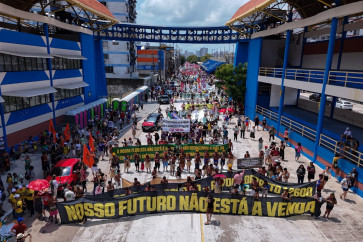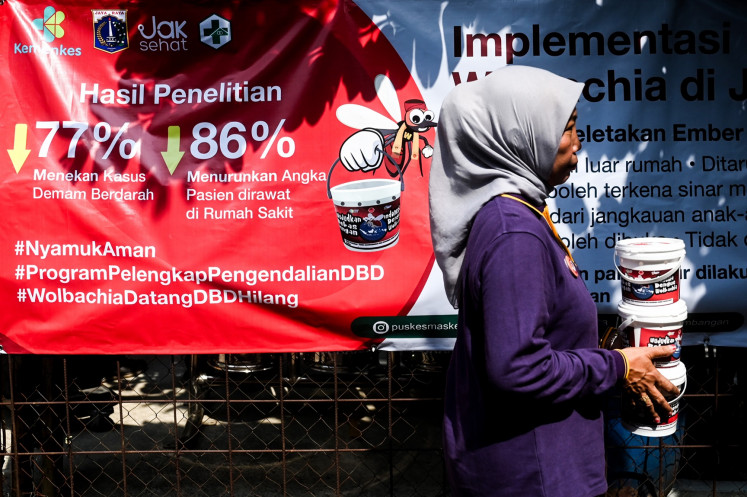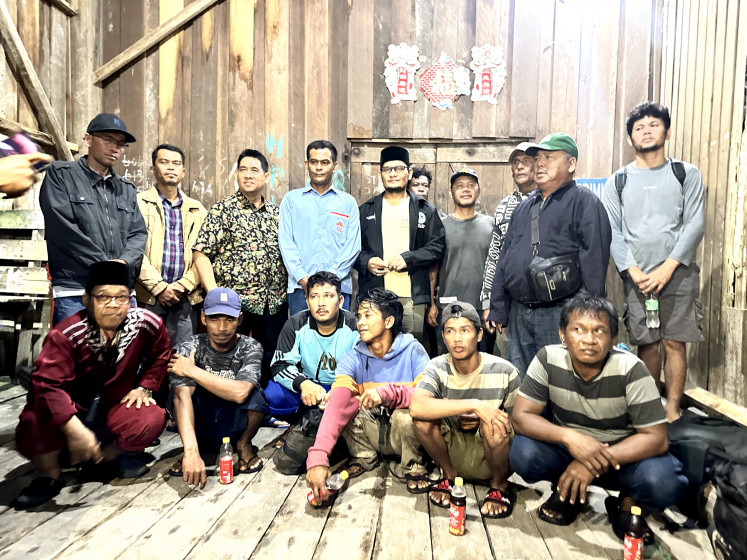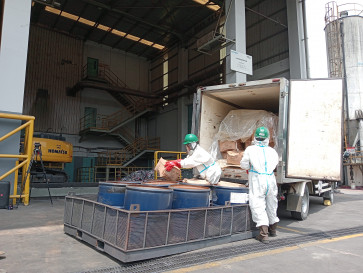Popular Reads
Top Results
Can't find what you're looking for?
View all search resultsPopular Reads
Top Results
Can't find what you're looking for?
View all search resultsSome 5.7 tonnes of shrimp contaminated with Cesium 137 disposed
A total of 494 cardboard boxes, weighing 5.7 tonnes, of shrimp contaminated by Cesium 137 radioactive were destroyed.
Change text size
Gift Premium Articles
to Anyone
 Workers at a dangerous and toxic waste disposal site operated by PT Prasadha Pamunah Limbah Industri (PPLi) prepare cardboard boxes of shrimp to be incinerated on Nov. 15 at the firm's facility in Nambo village, Klapanunggal district, Bogor regency, West Java. A total of 494 cardboard boxes, or 5.7 tonnes, of contaminated shrimp were destroyed. (JP/Theresia Sufa)
Workers at a dangerous and toxic waste disposal site operated by PT Prasadha Pamunah Limbah Industri (PPLi) prepare cardboard boxes of shrimp to be incinerated on Nov. 15 at the firm's facility in Nambo village, Klapanunggal district, Bogor regency, West Java. A total of 494 cardboard boxes, or 5.7 tonnes, of contaminated shrimp were destroyed. (JP/Theresia Sufa)
I
ndonesian authorities recently destroyed 5.7 tonnes of shrimp contaminated with Cesium 137. The shrimp were disposed at a dangerous and toxic waste disposal site operated by PT Prasadha Pamunah Limbah Industri (PPLi) in Nambo village Klapanunggal district, Bogor regency, West Java, on Saturday.
The Environment Ministry’s deputy for pollution and environmental damage control (PPKL) Rasio Ridho Sani said destroying the contaminated shrimp was conducted after the United States Food and Drug Agency (FDA) found radioactive Cesium 137 contamination on Indonesian shrimp products from Cikande, Serang regency, Banten.
The Nuclear Energy Regulatory Agency’s (Bapeten) investigation found that from 3,250 cardboard boxes of shrimp checked, there were 494 cardboard boxes, or 5.7 tonnes, which were contaminated by Cesium 137 on the outer surface of the cardboard boxes.
Testing on the shrimp showed that there were 10.8 Bq/kilogram of Cesium 137. The figure was far less than Cs 137 clearance threshold of 100 Bq/kg, which is considered safe to be released to the environment.
“Today [Saturday], we destroyed shrimp contaminated by Cesium 137 upon recommendation from the Indonesian Quarantine Agency (Barantin) and Bapeten to destroy the 494 cardboard boxes,” Rasio said.
Destroying the shrimp must be done carefully and according to radiation safety protocols and environmental safety regulations. The destruction was done using a vertical stoker incinerator at a temperature of between 800 degrees and 900 degrees Celsius with air emission control equipment and a continuous emission monitoring system (CEMS).
Ashes from the incinerator were handled with a macro encapsulation process, which entails solidification of the contaminated material using concrete inside of a high-density polyethylene (HDPE) box, which was then put inside a landfill area.
Your Opinion Matters
Share your experiences, suggestions, and any issues you've encountered on The Jakarta Post. We're here to listen.
Thank you
Thank you for sharing your thoughts. We appreciate your feedback.


















